Discover how many books are in the Bible. Learn differences in Protestant, Catholic, Orthodox, and Ethiopian canons with clear, simple explanations.
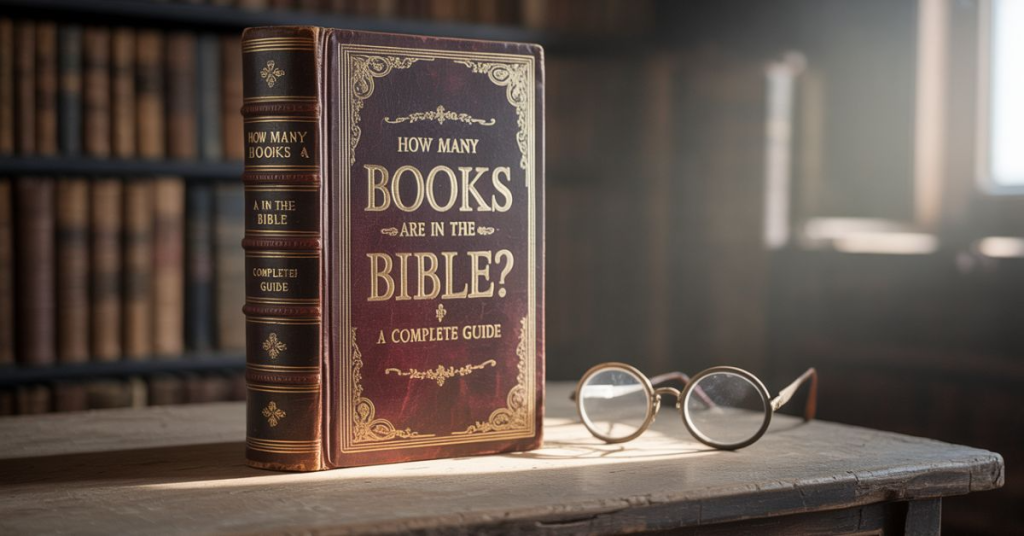
Discover how many books are in the Bible. Learn differences in Protestant, Catholic, Orthodox, and Ethiopian canons with clear, simple explanations.
The question “How many books are in the Bible?” is not as simple as it seems. For many Christians in the USA, the answer is 66 Protestant Bible books, yet Catholic, Orthodox, Jewish, and Ethiopian traditions include more. The variety shows us that the Bible is not one fixed book, but a library of ancient writings shaped by history, tradition, and faith.
This guide explains the 39 Old Testament books, the 27 New Testament books, and the differences among traditions like the Roman Catholic Bible canon, the Greek Orthodox Bible, the Syriac Bible, and the Ethiopian Bible books. By looking deeper, you will see how faith communities shaped their Bibles, why they differ, and how they continue to inspire today.
Why the Number of Books in the Bible Matters
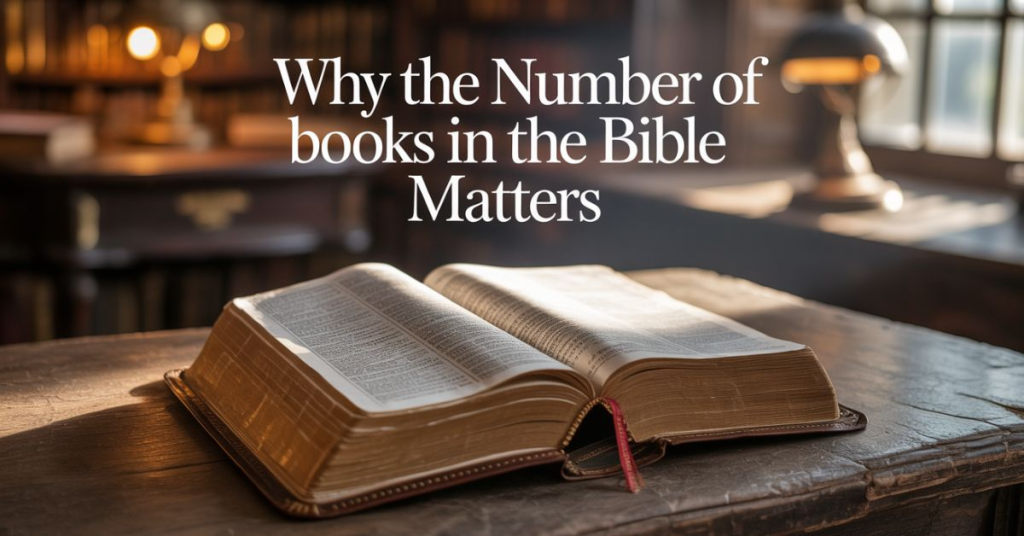
Asking “How many books in the Bible?” matters because it shows how scripture is understood differently in history and across traditions. Some count 66 Protestant Bible books, others use 73 Roman Catholic Bible books, while the Greek Orthodox Bible lists around 75–79 and the Ethiopian Bible books hold 81–84. In total, scholars say there are around 263 biblical books (total counting traditions) across history.
This difference is not just numbers. It affects worship, theology, and identity. For Jewish communities, the Hebrew Bible (Tanakh) with Torah, Prophets, Psalms, Proverbs (core texts) remains central. For Christians, the mix of Old and New Testaments shapes belief in Jesus. For others, the Talmud (Mishna and Gemara) or extra-biblical writings play a role in learning. These variations show how biblical authority and tradition are deeply tied to culture and history.
The Old Testament: 39 Books Explained
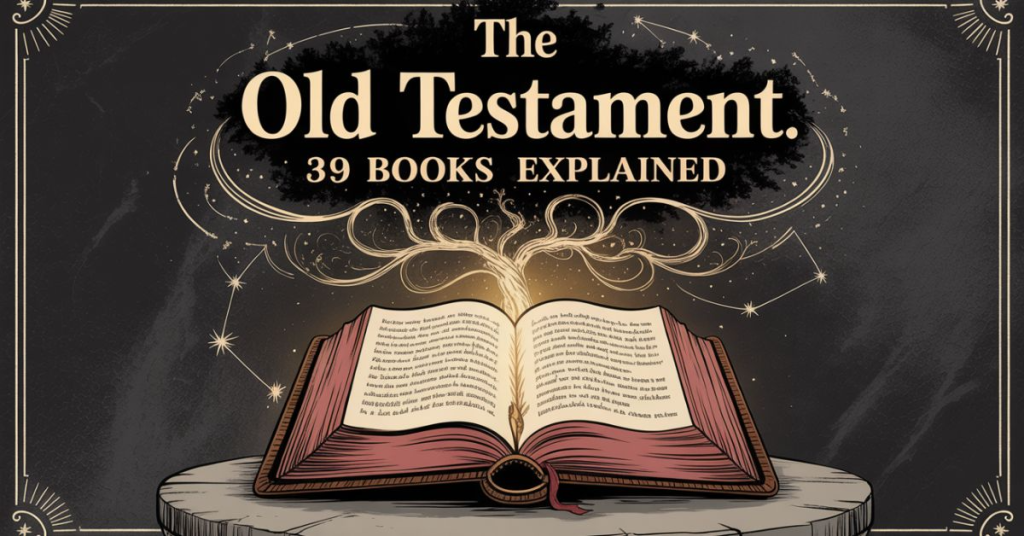
The 39 Old Testament books in the Protestant tradition cover law, history, poetry, and prophecy. They include Genesis, Exodus, Leviticus, and continue through Isaiah, Psalms, and Malachi. Jewish readers arrange them differently in the Hebrew Bible (Tanakh), where they appear in three main sections: Torah, Prophets, and Writings.
Many Christians use the Septuagint (Greek Old Testament), an ancient translation that influenced the New Testament. This version includes extra texts later called the Apocrypha books or Deuterocanonical writings, such as the Wisdom of Solomon scripture. These writings reflect religious learning and practice in Judaism and shaped how Christians saw connections between Wisdom as divine figure in Proverbs and Jesus and Wisdom comparisons.
The New Testament: 27 Books in Detail
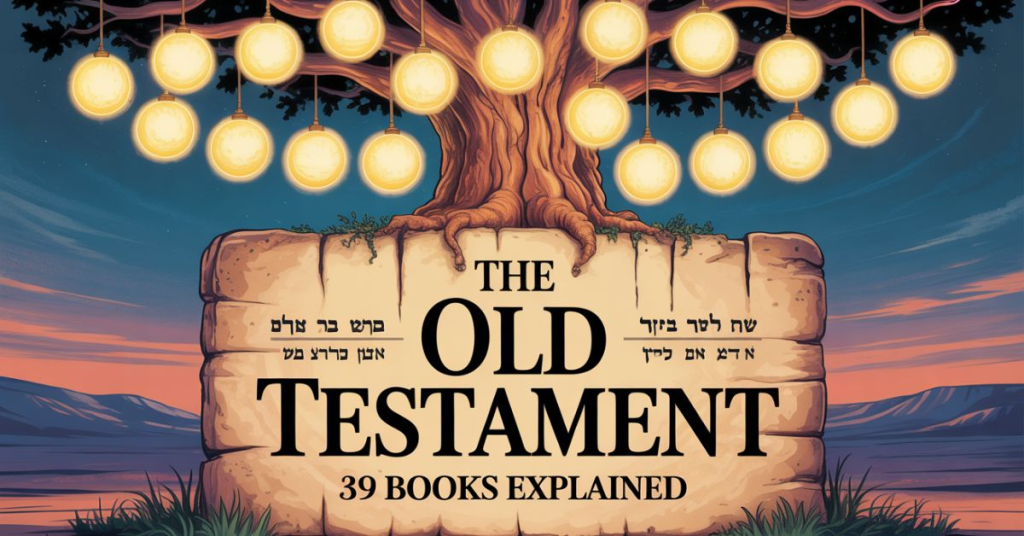
The 27 New Testament books begin with the four Gospels: Matthew, Mark, Luke, and John. They continue with Acts, letters by Paul, Peter, James, and others, ending with Revelation. These books form the heart of Christianity, teaching about Jesus’ life, death, and resurrection.
Early believers read many early Christian writings, but not all were accepted. The Muratorian fragment from the 2nd century shows the earliest list of accepted books. Over time, historical councils deciding the canon confirmed the 27 New Testament books that remain central today. These texts also reveal contradictions and innovations in scripture, showing both unity and diversity of belief.
Protestant, Catholic, and Hebrew Bible Differences
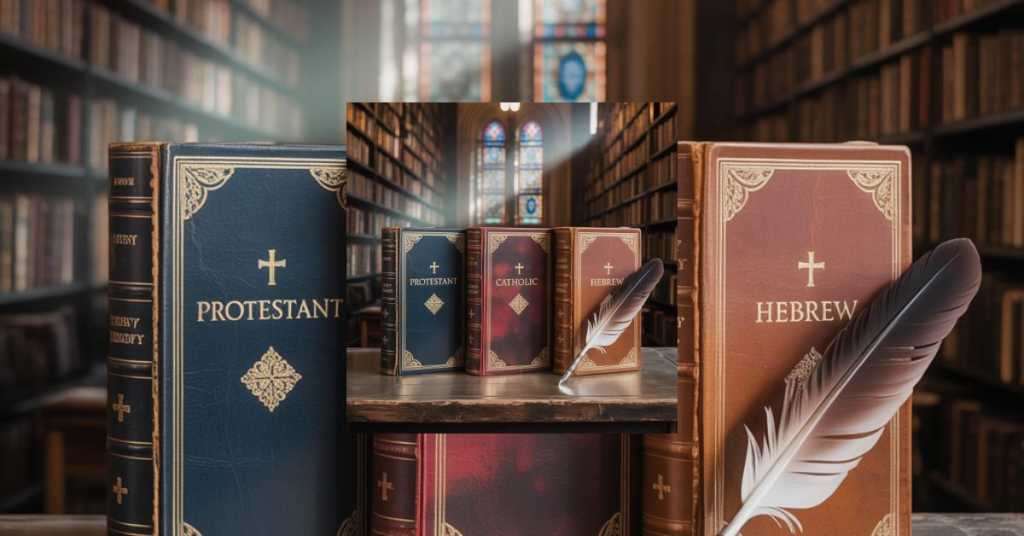
The Protestant Bible vs Catholic Bible is one of the most common questions in America. Protestants use 66 Protestant Bible books, while Catholics use 73 Roman Catholic Bible books, which include seven Deuterocanonical writings like Tobit, Judith, and Baruch.
Jewish communities follow the Hebrew Bible (Tanakh) with 24 books, although the content overlaps with the 39 Old Testament books. The main difference is structure and grouping. These biblical canon differences remind us that the Bible is not one single list but a narrow vs broader Bibles issue shaped by history.
Additional Writings and Apocrypha
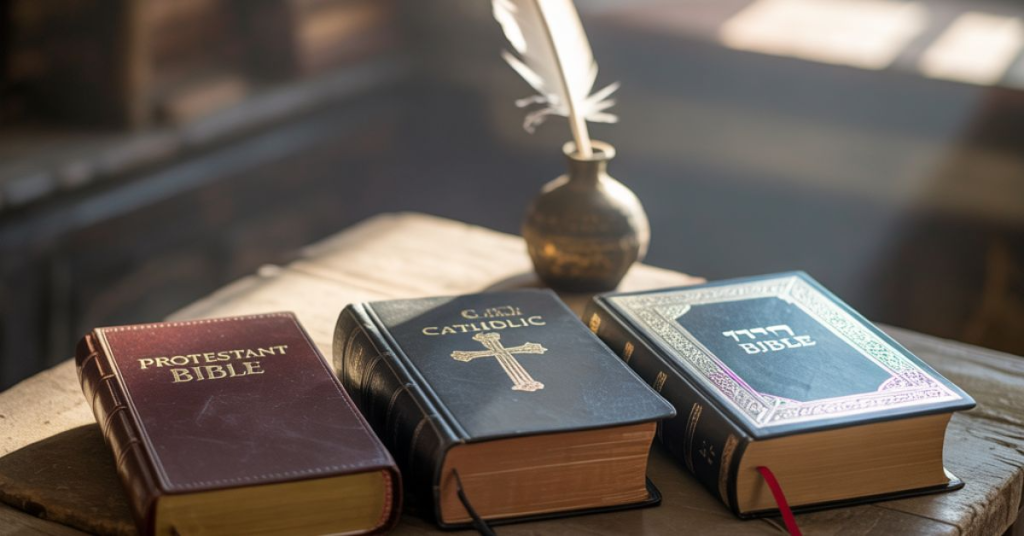
The Apocrypha books or Deuterocanonical writings include 1 and 2 Maccabees, Sirach, Baruch, and the Wisdom of Solomon scripture. Catholics accept them, Protestants read them as history but not scripture, and Jews do not include them.
These books highlight themes like female divinity “Wisdom” and wisdom traditions. They shaped theology, linking Wisdom as divine figure in Proverbs with Jesus and Wisdom comparisons. In art and worship, these writings influenced devotion even when not part of the narrow Christian creeds.
How the Bible Books Were Chosen

The process of choosing scripture is called canonization. Leaders used tests like apostolic authorship, harmony with teaching, and wide use in worship. The Muratorian fragment shows early lists, while councils in Hippo (393) and Carthage (397) confirmed the canon.
This process explains why there are expanding or shrinking the Bible traditions. Historical councils deciding the canon made choices that shaped belief, leaving out some extra-biblical writings but preserving others. Their work shows the tension between biblical authority and tradition and open-ended meanings of scripture.
Questions Raised by Extra-Biblical Writings

Writings like the Gospel of Thomas, the Book of Enoch, and other extra-biblical writings raise questions. They were part of early Christian writings, but most were excluded from the final canon. These texts show how broad belief once was.
In modern times, newly discovered biblical texts, such as those found in Qumran or Nag Hammadi, challenge us to rethink. They show modern discoveries of ancient writings still influence how people view biblical authority and tradition. These discoveries reveal open-ended meanings of scripture beyond the official canon.
Why Different Bibles Have Different Numbers of Books
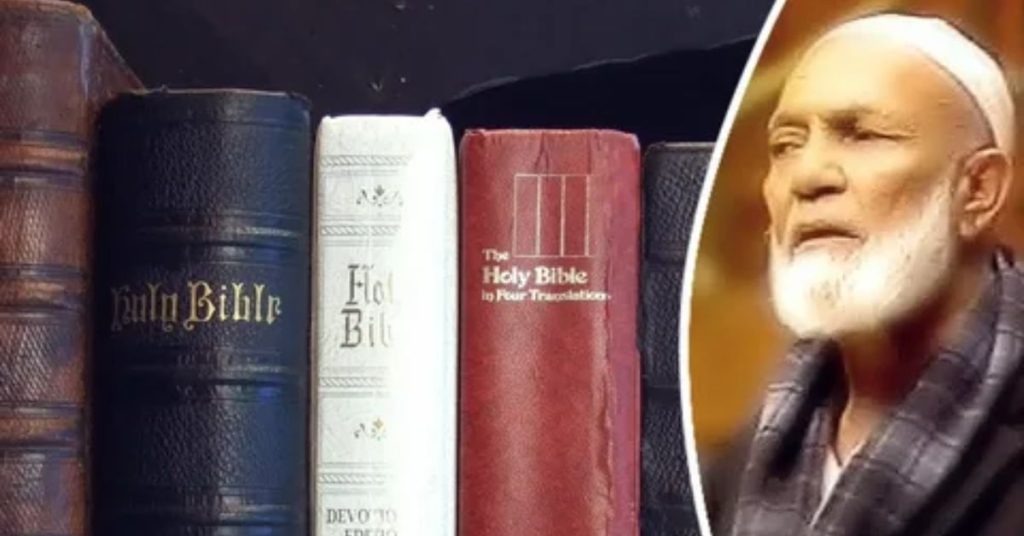
Different traditions use different standards. Protestants use 66 Protestant Bible books, Catholics use 73 Roman Catholic Bible books, the Greek Orthodox Bible uses 75–79, and the Ethiopian Bible books include 81–84.
This table shows the biblical canon differences clearly:
| Tradition | Number of Books | Notes |
| Protestant Bible | 66 | Standard in USA |
| Roman Catholic Bible | 73 | Includes Deuterocanonical writings |
| Greek Orthodox Bible | 75–79 | Wider canon, includes more Apocrypha books |
| Ethiopian Bible books | 81–84 | Largest canon in use |
| Hebrew Bible (Tanakh) | 24 | Same texts as 39 Old Testament books |
Canons That Shrink or Expand the Bible Over Time
The Bible did not appear in one fixed list. Over history, it expanded and shrank. The Septuagint (Greek Old Testament) once included more writings. The Syriac Bible had fewer, leaving out Revelation at first. The Ethiopian Bible books remain the largest.
These shifts reflect how Christian denominations and scripture developed differently. Some chose narrow Christian creeds, while others allowed open-ended meanings of scripture. Looking at these expanding or shrinking the Bible trends shows faith is living and shaped by history.
Conclusion
So, how many books are in the Bible? The answer depends on tradition: 66 Protestant Bible books, 73 Roman Catholic Bible books, 75–79 Greek Orthodox Bible books, and 81–84 Ethiopian Bible books. Jewish tradition counts 24 in the Hebrew Bible (Tanakh). Together, scholars estimate around 263 biblical books (total counting traditions) through history.
The variety shows the Bible is more than a single book—it is a library of ancient Jewish scriptures, early Christian writings, and sacred traditions. For readers in the USA, knowing these differences enriches faith and helps explain why your Bible may not look the same as another’s.
FAQs
How many books are in the Bible in total?
Most Protestants count 66 Protestant Bible books, Catholics count 73 Roman Catholic Bible books, while Orthodox and Ethiopian Bibles have even more. Across traditions, scholars estimate around 263 biblical books (total counting traditions).
Why do Catholic and Protestant Bibles have different numbers of books?
The Catholic Bible includes Deuterocanonical writings such as Tobit, Judith, and the Wisdom of Solomon, which Protestants call Apocrypha books and exclude from their canon.
What is the Hebrew Bible (Tanakh)?
The Hebrew Bible (Tanakh) is the Jewish scripture containing 24 books. While it matches the content of the 39 Old Testament books, it arranges them differently into Torah, Prophets, and Writings.
Which Bible has the most books?
The Ethiopian Bible books collection is the largest, with 81–84 books. It includes extra writings not found in the Greek Orthodox Bible or Roman Catholic Bible canon.
What are Apocrypha and why are they important?
The Apocrypha books, also called Deuterocanonical writings, are ancient texts like Sirach, Baruch, and 1–2 Maccabees. They influenced Christian theology, wisdom traditions, and even link Wisdom as divine figure in Proverbs with Jesus and Wisdom comparisons


Leave a Reply